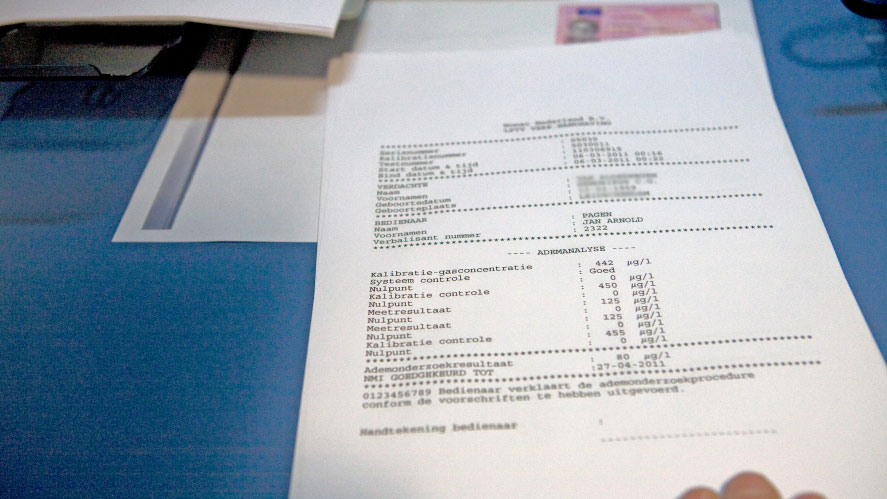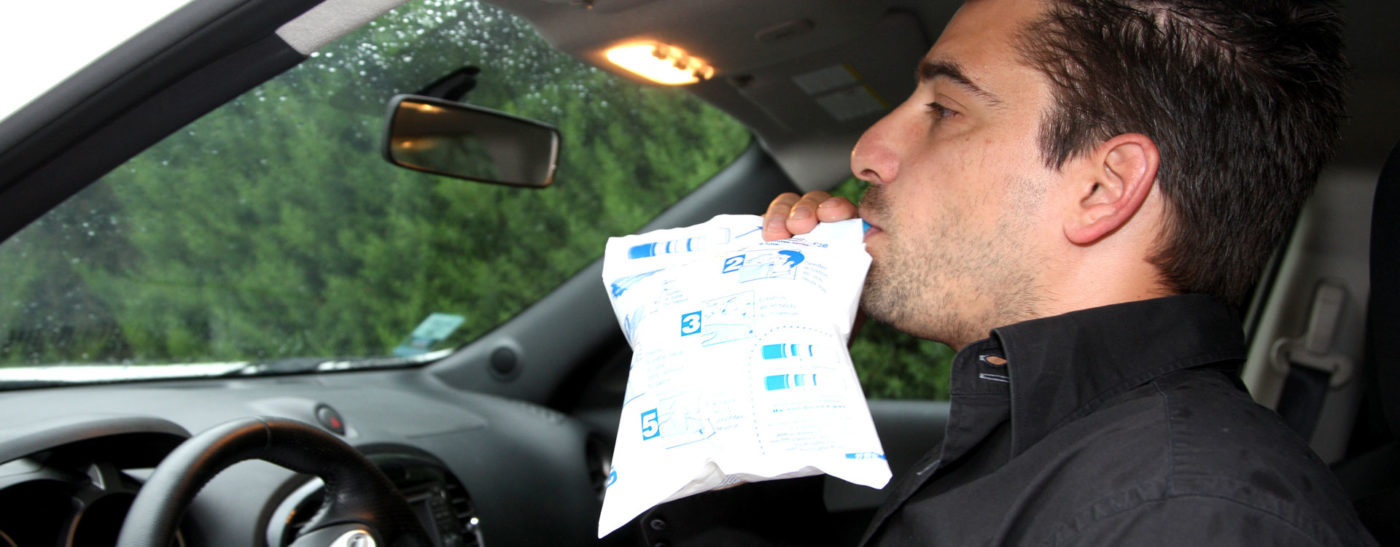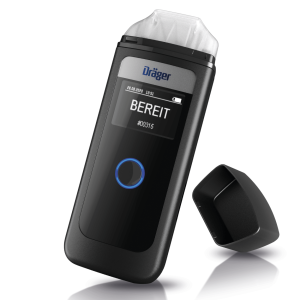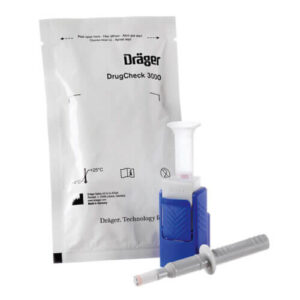Legislation in the Netherlands
In the Netherlands, the law prescribes that you may have a maximum of 0,5 per mille of alcohol in your blood (or 0,22 mg of alcohol per liter of exhaled air). For inexperienced drivers with a driver's license for less than 5 years, the limit is 0,2 per mille. This means that it is not prohibited to drive with alcohol, but this only concerns a very limited amount of one to a maximum of two glasses of alcohol.
An alcohol test indicates whether you have reached or exceeded the limit. If you have more than 0.5 per mille of alcohol in your blood (0,2 for inexperienced drivers), you are punishable.
There are a number of laws regarding alcohol:
- The Liquor and Catering Act
- The Road Traffic Act (WVW)
- General Police Regulation (APV). Additional rules established by the municipality
Liquor and Catering Act
The Drinking and Catering Act is intended to ensure that the sale of alcohol takes place in a responsible manner. The law focuses mainly on sellers (providers) of alcohol in catering establishments, sports canteens, liquor stores and shops. This law therefore has little impact on traffic, except that a seller (provider) is prohibited from serving to people who are drunk. However, intervention if a customer drives to their vehicle drunk is rarely, if ever, done. The catering employee is not obliged to do this, but an alcohol test is sometimes made available to inform the customer of his condition and responsibility.
Arrested with alcohol: what penalties?
If you are arrested with a blood alcohol level that is too high, the penalty may include:
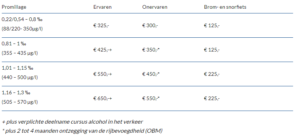
- Driving ban (by justice)
- Community service/imprisonment (by the judiciary)
- Mandatory course on alcohol in traffic, costs €870 (by CBR)
- Mandatory examination into alcohol abuse and alcohol dependence, costs € 1000 (CBR)
- Collection of driving license (CBR)
If you evade a measure, you will lose your driver's license. In the past, a mandatory alcohol interlock could also be imposed, but this measure has been withdrawn since March 2015.
Drugs in traffic
Drugs in traffic are absolutely prohibited. This applies to all hard and soft drugs, including ecstasy, amphetamine and GHB.
Drug use can be demonstrated by a saliva test, blood or urine test, but also by a test of vision, speech and motor skills. Are you a suspicious driver? Then you must undergo these tests.
Arrested under the influence of drugs: what penalties?
From April 2023, new rules will apply in the Netherlands and an anti-drug course will be immediately imposed in the event of a positive drug test. This program lasts 5 weeks and costs € 1100, which does not include the fine for driving under the influence.
These fines are not easy. If you have been caught more than once, the fines can amount to a maximum of €21.700. You can also lose your driving license for a shorter or longer period of time. In extreme cases, you can get a year in prison.
You must also have an investigation carried out by the CBR to see whether you can safely participate in traffic. This research costs € 1200
What is the chance of being caught? It was relatively small, but currently considerably larger. Currently, up to 1000 people are arrested per month who test positive for a drug test.
In 2022, 43000 fines will have been issued for driving under the influence of alcohol or drugs.
The legal limits:
- amphetamine, methamphetamine, cocaine, MDMA, MDEA and MDA: 50 micrograms per liter of blood;
- cannabis: 3,0 micrograms tetrahydrocannabinol (THC) per liter of blood;
- heroin and morphine: 20 micrograms of morphine per liter of blood;
- GHB, gamma butyrolactone or 1,4-butanediol: 10 milligrams of GHB per liter of blood.
- The following applies to all other drugs: if they affect your driving, you should not use them while driving.
- Do you use a combination of different drugs or drugs in combination with alcohol? Then it is extra dangerous and lower limits apply.




